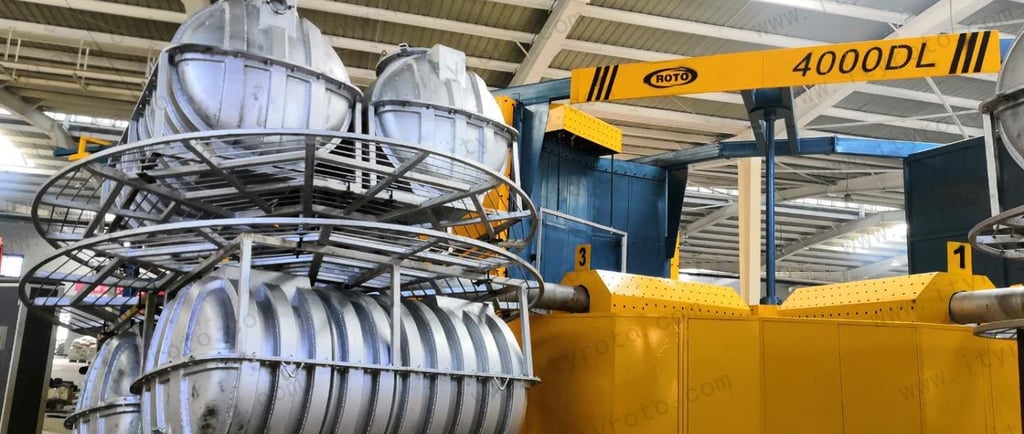Understanding Rotational Molding Machines: Principles and Applications


Introduction to Rotational Molding
Rotational molding, often referred to as rotomolding, is a process employed in the manufacturing of hollow plastic products. This versatile method has gained traction across various industries, including toys, automotive, and construction, due to its efficiency and capability to produce complex shapes. In this blog post, we will delve into the basic working principle of rotational molding machines and explore their applications in different sectors.
How Rotational Molding Machines Work
The principle behind rotational molding machines is relatively straightforward. The process involves heating plastic resin until it reaches a molten state. The heated material is then poured into a two-piece mold. The mold is locked and rotated around two axes simultaneously, allowing the material to coat the inside walls evenly.
As the mold continues to rotate, the molten resin adheres to the mold walls and gradually forms a hollow shape. Cooling is an essential part of this process, and once the material solidifies, the mold opens, and the final product is removed. This method ensures that the produced items have minimal stress and even wall thickness, which is crucial for durability.
Applications of Rotational Molding
Rotational molding machines have a vast array of applications across diverse industries. One of the most recognized areas is in the manufacture of toys. With the capacity to create intricate designs and lightweight structures, rotational molding allows for the production of various toy shapes that are safe and durable.
In the automotive industry, these machines produce parts such as fuel tanks, bumpers, and underbody shields. Using rotomolding for these components benefits manufacturers by providing lightweight options that enhance fuel efficiency while maintaining strength and resistance to impact.
The construction sector also utilizes rotational molding machinery for creating essential components such as pipes, tanks, and water troughs. These products are not only vital for infrastructure but are also durable enough to withstand environmental stresses. Additionally, the flexibility of the process allows for customization, which is particularly useful in meeting the specific needs of various projects.
Conclusion
In conclusion, rotational molding machines play a crucial role in the production of various hollow plastic products across multiple industries. Understanding the basic principles of how these machines operate provides insight into their widespread use and benefits. From toys to automotive parts and construction materials, the applications are extensive, warranting further exploration and innovation in this efficient manufacturing process.
